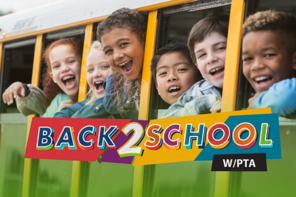When English is not a family’s first language, navigating the education system to support their child’s learning can be difficult. That’s why English Language Learners (ELL) need extra services to help.
In a special Spanish episode of Notes from the Backpack: a PTA Podcast, we talked to language development expert, Dr. Lorena Mancilla, about the resources for English Language Learners and how families can get access to them.
What are English Language Learners?
If your children qualify and are identified as English learners, they have many rights to receive assistance and services for their studies, so your children can achieve academic success and to ensure they can understand what it is they are being taught.
What are the differences between ESL programs and bilingual programs?
Not all programs geared towards English Language Learners are the same. In fact, there are very distinct differences between bilingual programs and English as a Second Language (ESL). A bilingual program may be transitional bilingual, or it may dual bilingual, but the goal is for students to become bilingual. They are offered support in their native language and in English learning so that the children will become bilingual. In contrast, the goal of the ESL program is to learn English. It’s not designed to help them become bilingual.
What types of services and supports are available for students learning English?
The most common type of program is ESL and the ESL teacher can help students in a variety of ways, from offering a separate class to working with the child’s other teachers to develop instructional strategies.
Families have the right to know which type of program their child is going to be offered. If you don’t understand the translation, ask, “How are you going to support my child?” Every year, families should get information about how their child is coming along in English learning, what their academic grades are—and if they are in bilingual programs—how they are developing in the other language.
What are some of the challenges ELL students face in education?
The reality is students in our schools are speaking different languages, not just English, not just Spanish. However, most of our teachers are not bilingual or multilingual. So, in my opinion, that’s where the problem lies. There are strategies and resources to help parents, students and teachers connect to help the student’s learning and development throughout the year.
For Spanish-speaking parents, sometimes their children don’t want to speak Spanish.
I began listening to both Spanish and English when I was a baby, but I reached a point where I could no longer speak in Spanish. I spoke really “mocho”—broken—as they say in my family. And by the time I was 12 years old, it was really difficult because I only spoke English. I’ve been trying to improve my Spanish communication skills for over 30 years now.
I like to share with parents. Their children can lose their ability to communicate in Spanish. That’s true for various immigrant groups in this country. They lose the language if they don’t use it.
Could you tell us one thing that parents can do to support their children’s education?
I think the most important thing is for a child to know that their family is there. Parents, you have a very important role in your children’s education. I know it’s difficult sometimes and not all of us have the opportunity to sit down and read a book to our children or help them with their assignments, but saying, “Honey, I love you, your studies are important,” that counts.
Learn more about resources for ELL families in our full interview with Dr. Mancilla—that’s in Spanish—available wherever you listen to podcasts!
Rebecca Bauer is the family engagement specialist with the Center for Family Engagement at National PTA.





